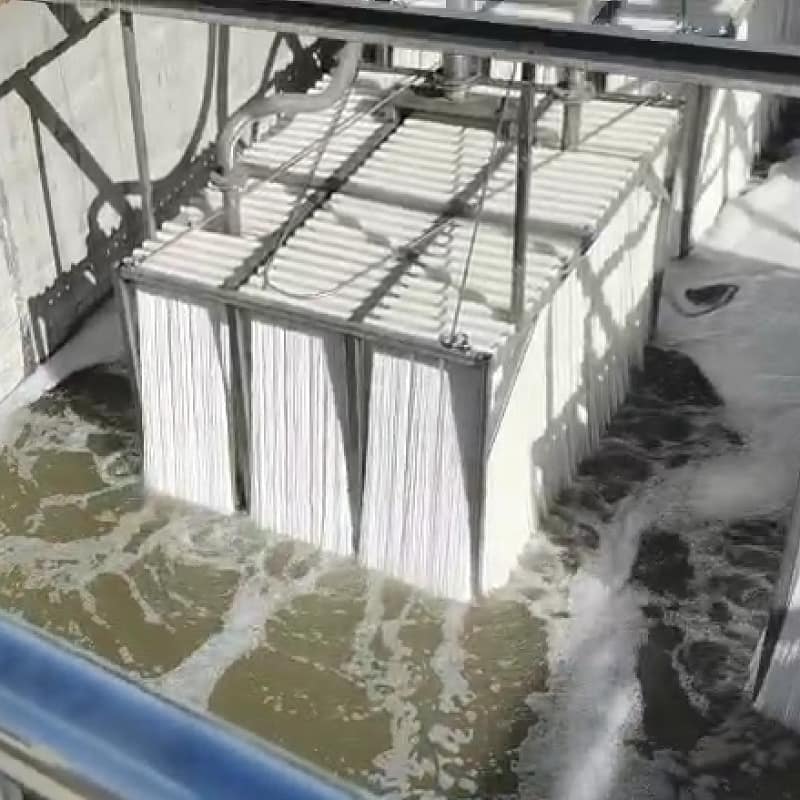Key Features and Working Principle of MBR Membrane Technology
MBR (Membrane Bioreactor) membrane technology is a cutting-edge solution in the field of wastewater treatment. By combining biological treatment with advanced membrane separation, it offers a highly efficient and compact treatment process. Below, we outline the main features and the core working principle of MBR systems.
Key Features of MBR Membrane Technology
1. Space-Saving Design
MBR systems require less space compared to conventional treatment processes. Due to the high sludge concentration and membrane separation, reactors can operate at higher loading rates without increasing tank size.
2. Easy Operation and Maintenance
Unlike traditional activated sludge systems that may suffer from sludge bulking, MBR uses membrane suction for solid-liquid separation. This minimizes the effect of sludge bulking on effluent quality, making the system more stable and easier to manage. Automation is also highly integrated, reducing manual intervention.
3. Stable and High-Quality Effluent
Hollow fiber membranes used in MBR systems can retain nearly all microorganisms, including slow-growing or poorly settling types. This results in a more diverse biological population and shorter acclimation periods. Effluent quality is consistently high and transparent.
4. Long Sludge Retention Time (SRT)
The membrane allows high molecular weight and hard-to-degrade organic compounds to stay longer in the reactor, improving degradation efficiency. Operating under high volumetric load, low sludge load, and long SRT reduces excess sludge production and promotes the growth of slow-developing microbes.
5. Low Energy Consumption
Membranes operate under a relatively low suction pressure (-0.1 to -0.4 kg/cm²), resulting in lower energy use. Additionally, MBR systems typically do not require sludge return pipelines, further reducing operational cost.
6. Strong Shock Resistance
MBR systems can handle sudden fluctuations in influent water volume or quality. Increased membrane flow rates can temporarily absorb hydraulic shocks, and high sludge concentrations help buffer quality variations.
Working Principle of MBR Membrane Systems
MBR combines traditional biological treatment and membrane separation. Organic pollutants in the wastewater are biologically degraded by activated sludge. The treated water is then separated from the sludge using hollow fiber membranes.
The membranes have micropores that effectively retain suspended solids and biomass. Aeration is provided beneath the membrane modules to ensure oxygen supply and to keep membranes in motion, which helps prevent fouling by reducing sludge attachment on membrane surfaces.
Applications of MBR Membrane Technology
MBR technology is widely adopted in various sectors due to its efficient performance and reliability. It is especially popular in:
- Municipal and industrial wastewater treatment
- Greywater recycling and reuse systems
- Residential communities and commercial complexes
- Renovation projects with limited land availability
- Areas with strict discharge regulations and high water quality requirements
Conclusion
MBR membrane technology stands out for its compact size, operational convenience, excellent effluent quality, and adaptability to challenging wastewater conditions. It has become a preferred solution for modern wastewater treatment systems, particularly where space is limited and water reuse is prioritized.
Need help choosing the right membrane or designing your system? Contact our team at RANDL Environment — we’re happy to help with technical support or product selection!

